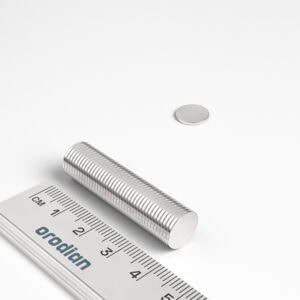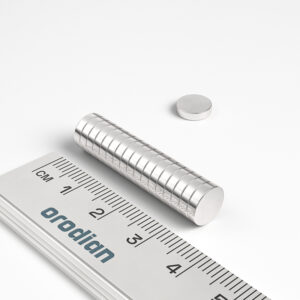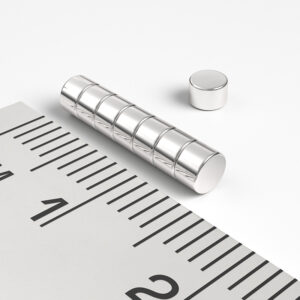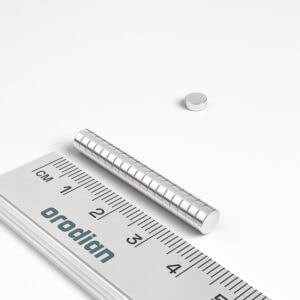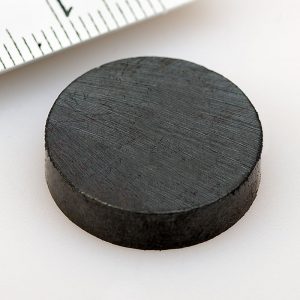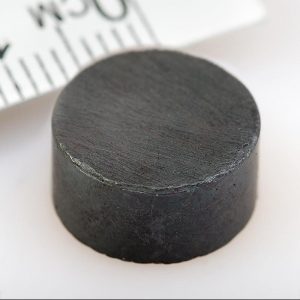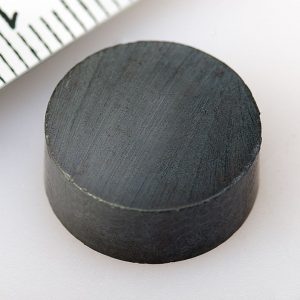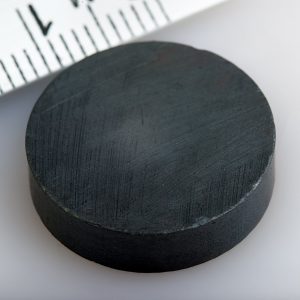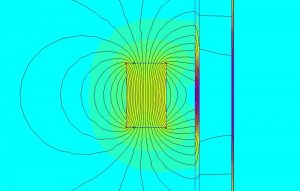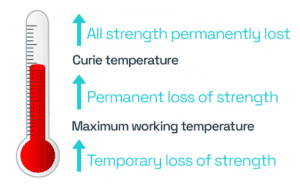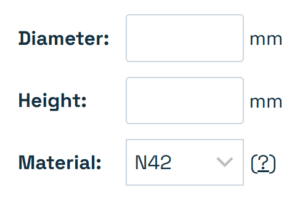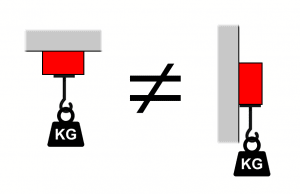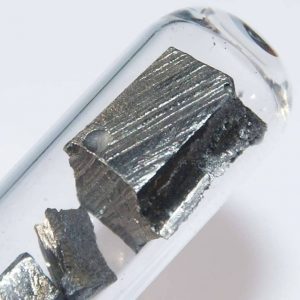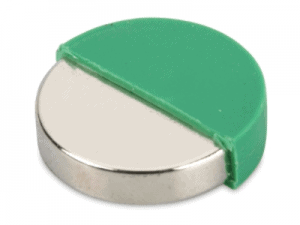Comparison: ferrite and neodymium magnets
In this article, we will compare two types of magnets that we sell in our e-shop: neodymium magnets and ferrite magnets.
Brief overview
The main differences are:
- appearance – ferrite magnets are black, neodymium magnets usually have a shiny metal surface
- strength – neodymium magnets are up to 10 times stronger than ferrite magnets
- price – neodymium magnets are more expensive than ferrite magnets
- brittleness – neodymium magnets are more brittle than ferrite magnets
- resistance to moisture – ordinary neodymium magnets rust in a humid environment, ferrite magnets do not rust
- heat resistance – ferrite magnets can be used at higher temperatures than neodymium magnets
- resistance to demagnetisation – ferrite magnets can lose strength when placed in a strong magnetic field
Appearance
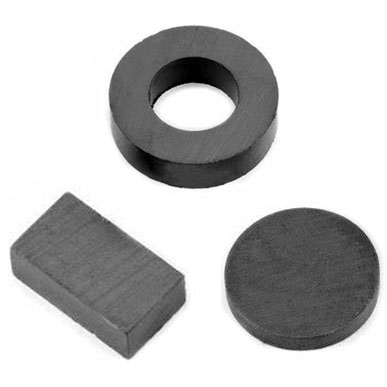
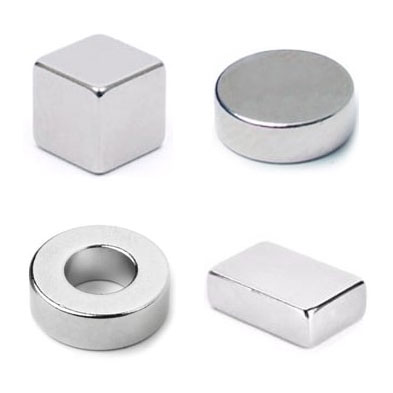
Ferrite magnets are black in colour. The colour of neodymium magnets depends on the surface treatment. The most frequently used is nickel. However, there are other types of surface treatment of neodymium magnets:
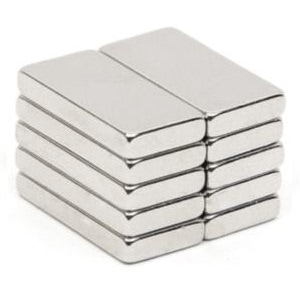
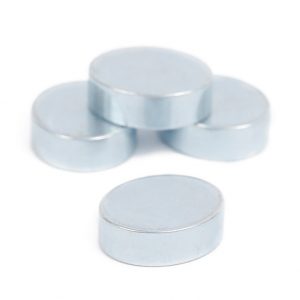
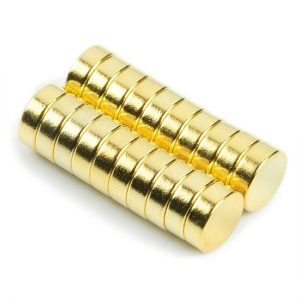
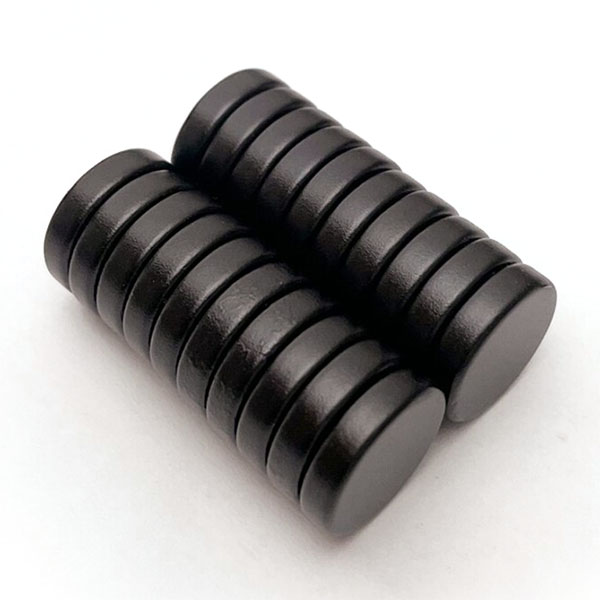
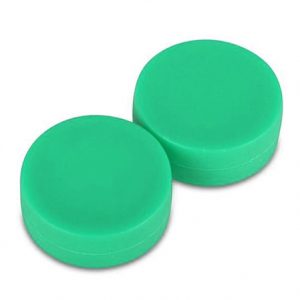
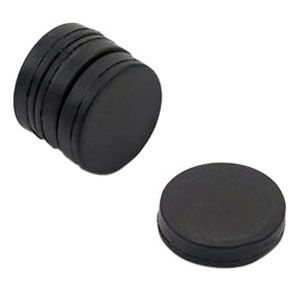
Read more about the advantages and disadvantages of different types of surface treatment. In our e-shop, we most often sell neodymium magnets with a nickel coating, but we also offer magnets galvanized, gold-plated, rubber coated or with a layer of epoxy resin.
Strength
Neodymium magnets are approximately 10 times stronger than ferrite magnets of the same dimensions:

If you need a magnet with the highest strength possible, neodymium magnets are a better choice than ferrite magnets. In some cases, a neodymium magnet can be too strong, in which case it is better to use a ferrite magnet.
Neodymium magnets are also suitable when you have little space and need the magnet to be small. With neodymium magnets, you can achieve the same force with a much smaller volume.
Price
Neodymium magnets are 3-5 times more expensive than ferrite magnets of the same dimensions. However, if we compare magnets with the same strength (for example, a 5×3 mm neodymium disc and a 15×5 mm ferrite disc), neodymium magnets are cheaper.
Ferrite magnets have a better price/volume ratio, but neodymium magnets have a better price/strength ratio.
You can find the prices of specific magnets in our e-shop in the categories neodymium magnets and ferrite magnets.
Brittleness
The disadvantage of neodymium magnets is that they are brittle and can break upon collision:
Ferrite magnets can also break under strong impacts, but are more durable than neodymium magnets.
The fragility of neodymium magnets can be reduced by housing them in a solid steel pot. Neodymium magnets housed in a pot have all the advantages of neodymium magnets and at the same time they are not as fragile since the steel pot protects the magnet from impacts.
Moisture resistance
Conventional neodymium magnets with a nickel surface are not suitable for use in a humid environment because they can start to rust. This problem can be solved by choosing the right surface treatment. The most suitable surface treatment is rubber or plastic, which provides 100% protection of the magnet from moisture. You can also use magnets with a protective layer of epoxy resin or gold, but this layer can rub off over time.
Ferrite magnets are resistant to corrosion. Therefore, they can also be used in humid environments without protective surface treatment.
You can find more information in the article Which surface treatment to choose?
All magnets suitable for use in wet environments can be found in the waterproof magnets category.
Heat resistance
Ferrite magnets can withstand temperatures up to 250 °C.
Conventional neodymium magnets begin to permanently lose part of their strength at a temperature of approximately 80 °C. However, there are also special types of neodymium magnets with temperature resistance up to 240 °C. For more information, see our article on the effect of temperature on the strength of magnets.
You can find our offer of heat-resistant magnets in the category of magnets with high temperature resistance.
Resistance to demagnetisation
When you place a ferrite magnet in a strong magnetic field, it may lose some of its strength. This happens most often if you put a ferrite magnet next to a neodymium one. The neodymium magnet creates a strong magnetic field around itself, which partially demagnetises the ferrite magnet.
To prevent loss of strength, keep ferrite magnets a few centimetres away from neodymium magnets.
Neodymium magnets are much more resistant to demagnetisation by an external magnetic field and do not lose strength under normal conditions.
Summary
Conventional neodymium magnets are 10 times stronger than ferrite magnets, but lose their strength at temperatures above 80 °C, rust in a humid environment and are brittle. However, there are also special neodymium magnets that are waterproof, resistant to high temperatures, or housed in a protective steel pot that reduces their fragility.
Ferrite magnets can be used without problems in humid environments or at high temperatures up to 250 °C. They are less brittle and cheaper than neodymium magnets. But they are much weaker.
